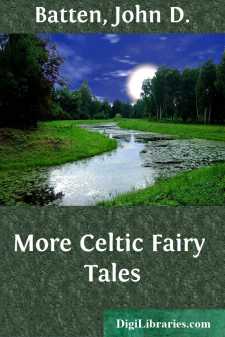Categories
- Antiques & Collectibles 13
- Architecture 36
- Art 48
- Bibles 22
- Biography & Autobiography 813
- Body, Mind & Spirit 142
- Business & Economics 28
- Children's Books 13
- Children's Fiction 10
- Computers 4
- Cooking 94
- Crafts & Hobbies 4
- Drama 346
- Education 46
- Family & Relationships 57
- Fiction 11828
- Games 19
- Gardening 17
- Health & Fitness 34
- History 1377
- House & Home 1
- Humor 147
- Juvenile Fiction 1873
- Juvenile Nonfiction 202
- Language Arts & Disciplines 88
- Law 16
- Literary Collections 686
- Literary Criticism 179
- Mathematics 13
- Medical 41
- Music 40
- Nature 179
- Non-Classifiable 1768
- Performing Arts 7
- Periodicals 1453
- Philosophy 64
- Photography 2
- Poetry 896
- Political Science 203
- Psychology 42
- Reference 154
- Religion 513
- Science 126
- Self-Help 84
- Social Science 81
- Sports & Recreation 34
- Study Aids 3
- Technology & Engineering 59
- Transportation 23
- Travel 463
- True Crime 29
Sort by:
by:
Humphry Ward
PART I "A stifling hot day!" General Hobson lifted his hat and mopped his forehead indignantly. "What on earth this place can be like in June I can't conceive! The tenth of April, and I'll be bound the thermometer's somewhere near eighty in the shade. You never find the English climate playing you these tricks." Roger Barnes looked at his uncle with amusement....
more...
I am not a susceptible woman. I am objective rather than subjective, and a fairly full experience of life has taught me that most of my impressions are from within out rather than the other way about. For instance, obsession at one time a few years ago of a shadowy figure on my right, just beyond the field of vision, was later exposed as the result of a defect in my glasses. In the same way Maggie, my...
more...
by:
Waldron Baily
Ichabod's Island The tide was at ebb. The noisily rushing spume-spotted waters of the sea were pounding the hard-sand shore of the easterly side of a beautiful island, nestling as a jewel in its setting just within the Capes, which form the shores on either side of Beaufort Inlet, but so exposed that when the winds blow from the sea the full force of the breakers is felt at this point. As this...
more...
PREFATORY NOTE "Love is the golden bead in the bottom of the crucible." And the crucible was St. Angé. Fifty years before this story began, St. Angé was a lumber camp; the first gash in that part of the great Solitude to the north, which lay across Beacon Hill, three miles from Hillcrest. When the splendid lumber had been felled within a prescribed limit, Industry took another leap, left St....
more...
by:
John D. Batten
or the last time, for the present, I give the children of the British Isles a selection of Fairy Tales once or still existing among them. The story store of Great Britain and Ireland is, I hope, now adequately represented in the four volumes which have won me so many little friends, and of which this is the last. My collections have dealt with the two folk-lore regions of these Isles on different...
more...
CHAPTER I. "Where shall I sign my name?" Veronica Serra's thin, dark fingers rolled the old silver penholder nervously as she sat at one end of the long library table, looking up at the short, stout man who stood beside her. "Here, if you please, Excellency," answered Lamberto Squarci, with an affable smile. His fingers were dark, too, but not thin, and they were smooth and dingy...
more...
by:
Edward Bellamy
Chapter 1 I first saw the light in the city of Boston in the year 1857. "What!" you say, "eighteen fifty-seven? That is an odd slip. He means nineteen fifty-seven, of course." I beg pardon, but there is no mistake. It was about four in the afternoon of December the 26th, one day after Christmas, in the year 1857, not 1957, that I first breathed the east wind of Boston, which, I assure...
more...
by:
Carl Henry Grabo
Chapter I "... going to the big house to live." Hortense's father put the letter back into its envelope and handed it across the table to her mother. "I hadn't expected anything of the kind," he said, "but it makes the plan possible provided——" Hortense knew very well what Papa and Mamma were talking about, for she was ten years old and as smart as most girls and...
more...
Chapter I. AT LEAST I MEANT WELL When the dreadful thing occurred that night, every one turned on me. The injustice of it hurt me most. They said I got up the dinner, that I asked them to give up other engagements and come, that I promised all kinds of jollification, if they would come; and then when they did come and got in the papers and every one—but ourselves—laughed himself black in the face,...
more...
There are two worlds in the minds of men: the one is artificial, selfish, and personal, the other is real and universal; the one is limited, material, essentially of the earth, the other supposes a kind of larger cosmopolitanism, and has no geographical limits at all; it is as wide as humanity itself, and only bounded by the capacity for experience, insight, and sympathy in the mind and heart of man. A...
more...











